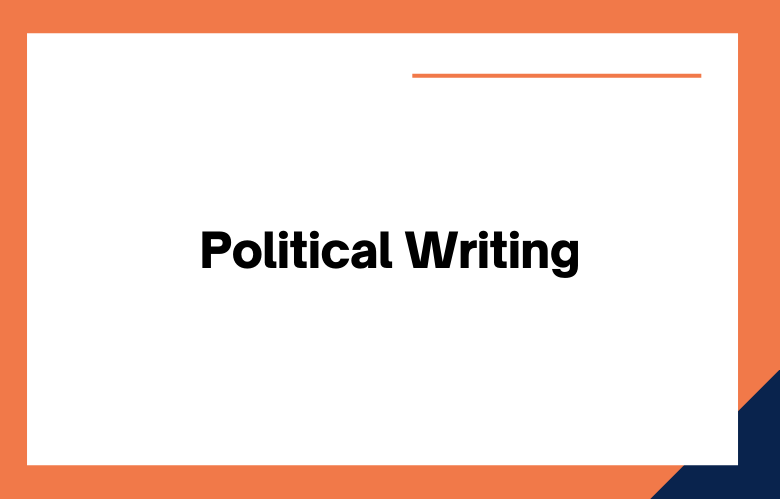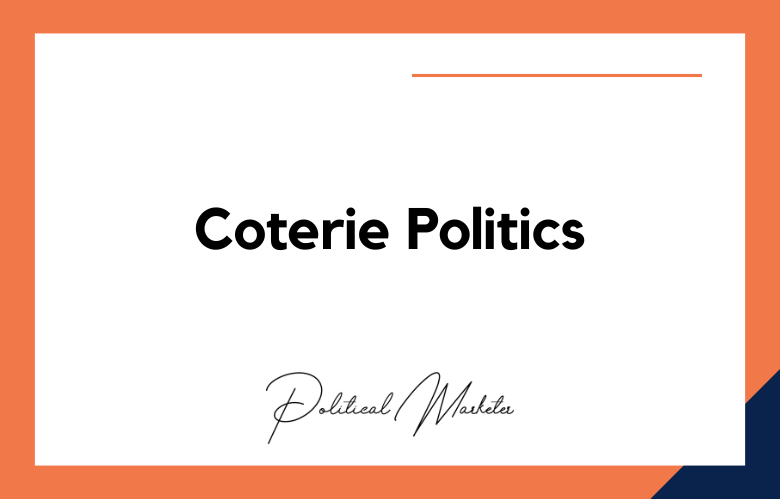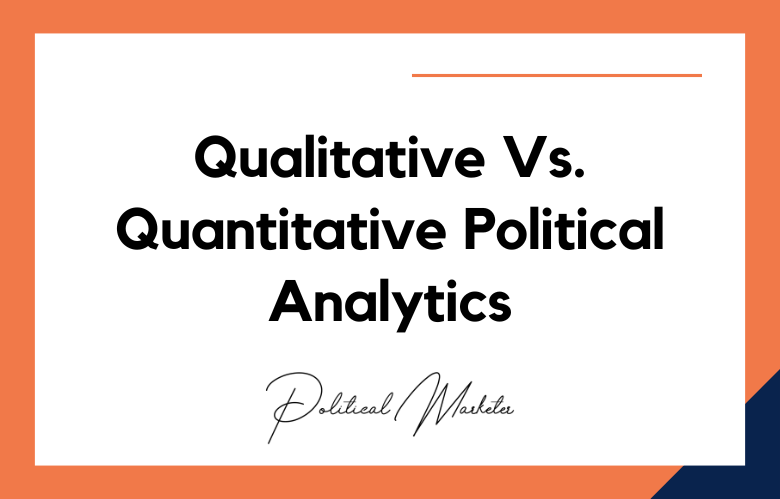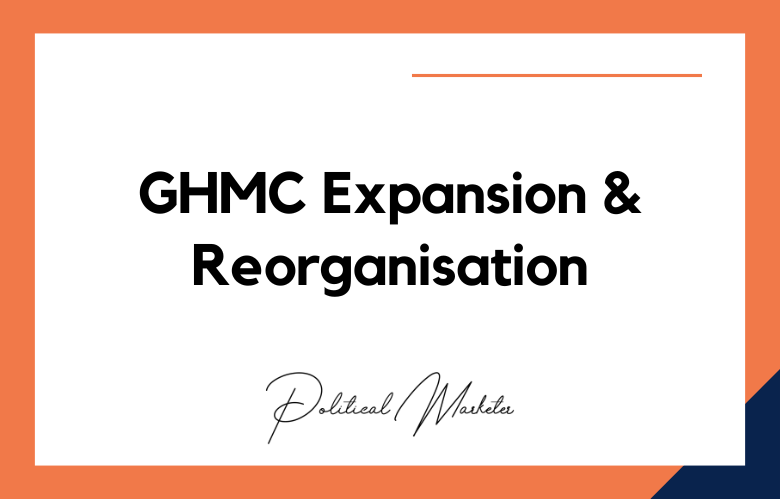Words are powerful. They can inspire, motivate, and unite people. Political writing can be a tool for rallying support for a cause or rallying opposition against a policy. And it can be used to build relationships with other countries or strengthen alliances with allies. Whatever your political goal may be, strong writing skills are essential to achieving it. So if you’re interested in entering the world of politics, learn how to write well. It will make all the difference.
Politics is all about words. The right words can inspire people to change the world, ruining a career. In this blog post, we’ll look at some of the most powerful political speeches throughout history and explore the power of words in politics. Stay tuned – it’s going to be a fascinating ride!
What is Political Writing?
Political writing is writing that is related to politics. This includes pieces written by or on political groups, candidates, parties, and government agencies.
Political writing is the art of writing in support of a political cause.
Political writing is a form of nonfiction. It’s one of the most common uses for language today because we often use it to express our opinions about political matters.
Political writing is nonfiction that presents an opinion or interpretation of political issues. It can be in speeches, position papers, or editorials.
Political writing is written communication that deals with government, politics, and political science.
Political writing is the act of sharing or discussing events and situations of a political nature.
Political writing is a genre of the essay, article, or other work that deals with political matters.
What is political writing, and why is it important?
Political writing is a type of writing that makes people think about their opinions, actions, and the world. It’s essential to keep reading it because it helps us get involved in our communities.
Political writing is the use of language to convince others to create change. It’s important because it allows people to express their opinions and ideas, affecting how politicians make decisions that affect everyone.
Political writing uses written language to present a view, promote a plan, or persuade readers.
Political writing is a genre of writing that analyzes and responds to politics. This type of writing is essential because it allows people to voice their opinions about politics and government, which helps create better policies for our country.
Political writing is the art of convincing people to support your point of view through rhetoric and logic.
One type of political writing his speeches. They’re essential because they can influence and educate many people on controversial topics.
Political writing is a way to express one’s opinion on issues that impact the world. It can be in different forms, such as novels, poetry, or news articles.
The history of political writing
In the 17th century, many political pamphlets were written. Many of these pamphlets contained strong opinions and biased information, but most importantly, they helped shape policy in England during this period.
Although the first political writings appeared in ancient times, it wasn’t until much later that people started writing about politics.
Politics have influenced society for thousands of years. Throughout history, politicians have defined the direction of countries and shaped people’s lives.
Types of political writing
- Political essays are generally written formally to persuade readers to adopt an author’s point of view.
- A political speech aims to persuade people and rally support for a person or party.
- A manifesto is an extended essay that lays out one’s beliefs and goals in great detail.
- Opinion writing is a form of political writing that expresses an opinion about a topic.
- Essays are usually based on personal experiences and may be autobiographical, but they can also be analytical essays about issues or topics.
- News reports differ from op-eds because they focus more on factual information than opinions.
- Editorial: The author’s opinion on a topic, often supported with facts and statistics
- Letter to the editor: A letter from an individual reader responding to something in the newspaper
- Magazine article: A long-form article that is usually published in a magazine
- Opinion Pieces: these are pieces that come from the writer’s personal opinion and can be either positive or negative
- Analysis: This type of writing analyzes a topic in-depth, usually with statistics and data to back up its points
- News Stories: news stories tell readers about current events happening around the world; they may include interviews with experts on the issue or people who have been affected by it
- Op-Eds: op-eds are articles written by someone outside of an organization, such as a politician, activist, union leader, etc., meant for publication in a newspaper or magazine
- Advocacy
- Analysis
- Argumentation
- Biography
- Campaigning/Polemicizing
- Persuasive writing
- Informative writing
- Narrative writing
- Polemic
- Pamphlet
- Manifesto
- Speech
How to write a persuasive political speech
A persuasive political speech is a type of writing that aims to convince the audience that your view on an issue is more valid than others. To do this, you must start by acknowledging different opinions and pointing out why they are wrong.
The initial step in writing a persuasive speech is to establish your credibility. For example, please talk about your accomplishments for the party or how many years you’ve been involved.
A persuasive political speech should be well-prepared, clear, and straightforward, logically structured. It should focus on the main points without unnecessary details.
A persuasive speech is a type of speech designed to convince the audience. This can be done through logical reasoning, testimonies, facts, figures, or stories.
It would help to tell the audience what you stand for and why and how you will fulfill your promises. It will help if you convince them they want to change their lives or won’t vote for you.
A good speech should be like a story with a beginning, middle, and end. It should present the main idea in the opening sentence or paragraph and develop it throughout the speech. A persuasive political speech will use facts and statistics to support its views.
A political speech is a great way to persuade your audience and win votes. If you’d like to learn some things you can do before writing your address, that will help with the process.
Political Writing Styles
Political writing shapes public understanding, influences opinion, and frames debates. Different styles are used depending on purpose, audience, and medium. Some aim to persuade voters, while others focus on informing citizens, critiquing opponents, or defending policies. Understanding these styles is essential for identifying bias, detecting smear campaigns, and evaluating credibility.
Persuasive Writing
Persuasive writing dominates campaigns and speeches. It uses rhetorical devices, emotional appeals, and selective data to convince audiences. Candidates often highlight achievements, promise reforms, or criticize opponents. While effective, this style can cross into manipulation if it distorts facts or exaggerates claims.
Informative Writing
This style emphasizes clarity and factual reporting. Government press releases, policy documents, and research papers typically use an informative tone. The aim is to provide citizens with accurate details on policies, programs, and decisions. Unlike persuasive writing, informative writing minimizes bias and relies on evidence-based statements.
Analytical Writing
Analytical writing interprets political events, policies, and strategies. Think tanks, journalists, and political analysts often use this style to break down complex topics. It relies on data analysis, historical context, and comparative insights. When done objectively, analytical writing helps the public understand long-term implications of political actions.
Opinion Writing
Opinion pieces, such as editorials and columns, combine personal viewpoints with political commentary. These writings often use strong arguments, critique leadership, or advocate for specific policies. While opinion writing can shape debates, it requires careful reading since it blends fact with personal perspective.
Propaganda and Smear-Oriented Writing
Propaganda and smear writing are designed to manipulate rather than inform. These texts exaggerate achievements of one side while spreading misinformation about opponents. AI tools are increasingly used to detect such campaigns by identifying coordinated messaging patterns, bot-driven amplification, and misleading narratives. Smear-oriented writing undermines trust in politics and can distort voter behavior.
Satirical Writing
Satirical writing critiques politics through humor, irony, and exaggeration. Political cartoons, comedy shows, and satirical articles highlight flaws in leaders or policies in a way that entertains and informs. Although satire is not always factually precise, it can spark important conversations and encourage critical thinking.
Academic and Research-Based Writing
Scholarly work in political science adopts a structured and evidence-driven style. It relies on citations, peer-reviewed research, and formal argumentation. This style provides long-term insights into governance, institutions, and political systems. Unlike campaign material, academic writing prioritizes accuracy and objectivity over persuasion.
Political Writing Techniques
Political writing relies on specific techniques to influence opinion, frame debates, and mobilize support. These methods shape how messages are received and can determine whether a campaign gains credibility or faces backlash. While some techniques aim to inform and persuade, others are designed to mislead or attack, such as those used in smear campaigns.
Rhetorical Devices
Politicians and campaign writers frequently use rhetorical tools like repetition, parallelism, and contrast to reinforce their points. For example, repeating a key phrase throughout a speech can make it more memorable. Contrast between “us” and “them” frames issues in simple terms, often highlighting divisions that work in favor of the speaker.
Emotional Appeals
Emotional language is a common technique in political writing. Appeals to fear, pride, hope, or anger can mobilize voters more effectively than facts alone. Campaigns often use personal stories, symbolic references, or exaggerated scenarios to evoke strong emotions. While powerful, this technique can become manipulative when tied to smear campaigns.
Use of Evidence and Statistics
Credible political writing often relies on data, research, and historical examples. Referencing economic indicators, voter turnout records, or policy outcomes lends authority to the message. However, misuse of statistics, selective framing, or cherry-picking data is a tactic often seen in propaganda or smear efforts.
Framing and Messaging
The way issues are framed influences how audiences interpret them. Political writers choose words carefully to cast policies, leaders, or opponents in a specific light. For example, labeling an initiative as “reform” suggests improvement, while calling it “a threat to democracy” invokes fear. Smear campaigns often exploit framing to distort facts.
Attack Writing and Smear Tactics
Smear writing aims to damage an opponent’s credibility through accusations, innuendo, or misinformation. This can appear in campaign speeches, advertisements, or online posts. Techniques include highlighting scandals, amplifying rumors, or creating misleading comparisons. AI-powered tools are increasingly being used to detect and track these tactics across digital platforms.
Persuasive Structure
Effective political writing follows a structured approach: introduce the issue, present evidence, highlight contrasts, and conclude with a call to action. This format ensures clarity and maximizes persuasive impact. Even in smear campaigns, writers use structured messaging to spread disinformation in ways that appear convincing.
Simplification of Complex Issues
Complex policies are often simplified into slogans or short phrases for mass communication. While simplification helps voters understand key points, it risks oversimplifying or misrepresenting reality. Smear campaigns exploit this by reducing nuanced issues into negative soundbites that resonate emotionally but lack factual grounding.
Satire and Irony
Satirical writing uses humor and irony to critique politics. While not always factually precise, satire exposes flaws, hypocrisy, or corruption in a way that resonates with audiences. Unlike smear campaigns, satire usually signals its intent openly, encouraging critical reflection rather than deception.
Ethical Concerns
Techniques in political writing walk a fine line between persuasion and manipulation. Responsible use informs citizens and strengthens democratic debate, while unethical use spreads disinformation and erodes trust. Smear campaigns, in particular, highlight the risks of unethical writing, where persuasive methods are misused to distort truth and mislead voters.
Types of Political Statements
Political statements are central to public communication. They shape how leaders, parties, and movements express their positions, defend their actions, or attack opponents. These statements vary in tone, structure, and purpose, ranging from factual announcements to emotionally charged rhetoric. Understanding the different types is essential to evaluate credibility, detect bias, and recognize smear tactics when they appear.
Policy Statements
Policy statements outline a leader’s or party’s stance on issues such as healthcare, education, or economic reforms. They usually include goals, plans, and promises. These statements aim to inform voters of future actions while reinforcing a campaign’s credibility. However, they can also be selectively framed to exaggerate benefits and hide potential drawbacks.
Defensive Statements
Defensive statements respond to criticism, scandals, or allegations. Leaders use them to clarify their positions, deny accusations, or redirect attention. While they are intended to protect reputation, they can also be crafted to downplay responsibility or shift blame to opponents. In smear campaigns, defensive statements are often triggered by false claims.
Attack Statements
Attack statements focus on discrediting opponents by highlighting failures, inconsistencies, or misconduct. These statements can expose legitimate issues, such as corruption or broken promises, but they can also rely on exaggeration or misinformation. Smear campaigns frequently use attack statements as their primary tool to damage an opponent’s image.
Symbolic Statements
Symbolic statements use language that appeals to identity, values, or collective memory. They often reference national pride, cultural traditions, or social justice. These statements create emotional connections with audiences, though they may lack detailed policy content. In the wrong hands, symbolic language can be manipulated to polarize voters.
Informative Statements
Informative statements share facts, updates, or official decisions. Examples include government announcements, press briefings, and policy rollouts. These statements are expected to remain neutral and evidence-based. However, when mixed with political motives, informative statements may be framed selectively to favor one side.
Persuasive Statements
Persuasive statements aim to influence voter opinion by combining facts with emotional or rhetorical appeals. Campaign speeches and advertisements often fall into this category. While persuasion is a natural part of politics, misuse of this technique through distortion or omission can mislead voters.
Apology or Concession Statements
When political figures acknowledge mistakes, they issue apology or concession statements. These may occur after failed policies, scandals, or electoral losses. An effective apology statement can rebuild trust, but insincere or strategically vague versions may worsen public skepticism.
Smear-Oriented Statements
Smear statements are designed to harm an opponent’s reputation through falsehoods, innuendo, or selective framing. They spread rapidly across speeches, media, and digital platforms, aiming to create doubt rather than present facts. AI-driven tools now play a role in identifying such statements by analyzing their spread and tone across online platforms.
Political Writing Psychology
Political writing psychology studies how language, tone, and structure influence public perception, emotions, and decision-making. Politicians, speechwriters, and campaign strategists use psychological principles to persuade, motivate, or discredit. Understanding the psychology behind political writing is critical to recognize when communication informs responsibly or manipulates through smear tactics.
Framing and Perception
How an issue is framed affects how audiences interpret it. By emphasizing certain aspects and downplaying others, writers shape perception. For example, describing a tax proposal as “relief for working families” creates a positive frame, while calling it a “burden on businesses” conveys the opposite. Smear campaigns often exploit framing by portraying opponents in a consistently negative context.
Emotional Triggers
Political writing often appeals to emotions because feelings strongly influence decision-making. Fear, anger, pride, and hope are commonly used triggers. Fear can mobilize support against perceived threats, while pride reinforces identity-based appeals. Smear campaigns frequently rely on anger and suspicion to weaken trust in opponents.
Cognitive Biases in Voter Interpretation
Psychological research shows that people process political messages through cognitive biases. Confirmation bias leads individuals to accept statements that match their beliefs while rejecting opposing views. Availability bias makes recent or dramatic events seem more important than they are. Political writers, especially in smear tactics, exploit these biases by repeating negative claims until they appear credible.
Persuasion and Rhetoric
Persuasive writing techniques draw from psychology. Repetition increases familiarity, metaphors simplify complex issues, and rhetorical questions engage audiences. When combined with selective data, these tools can create a strong narrative. In smear campaigns, rhetoric is often exaggerated or distorted to damage reputations rather than promote informed debate.
Identity and Group Psychology
Political communication often appeals to group identity. By framing messages around nationalism, religion, or social class, writers strengthen in-group loyalty and highlight out-group opposition. Smear campaigns use this psychology to deepen divisions, presenting opponents as threats to group values. This tactic is effective but erodes social trust.
Authority and Credibility
Psychological studies show that audiences are more likely to trust statements from authoritative or familiar figures. Campaigns use endorsements, expert opinions, and repetition by trusted voices to strengthen credibility. Smear efforts, however, may create false authority by spreading misinformation through seemingly credible but unreliable sources.
Language Simplification
Complex policies are often simplified into slogans or short phrases. This appeals to psychological preferences for clarity and memorability. While effective for persuasion, oversimplification can distort reality. Smear campaigns take advantage of this by reducing nuanced debates into negative soundbites that resonate emotionally but lack factual grounding.
Ethical Dimensions
The psychology of political writing highlights a tension between persuasion and manipulation. Responsible writing uses psychological techniques to engage and inform, while smear writing misuses them to mislead and harm. Ethical communication requires transparency, evidence, and respect for public judgment.
How to write an op-ed piece
Op-ed pieces help express your opinion on a topic.
An op-ed piece is an opinionated article in which the author expresses their views on a topic recently discussed in the news.
An op-ed piece is a short article published in newspapers or other media. It does not necessarily reflect the newspaper’s opinion but rather that of an individual writer.
An op-ed piece is an article that expresses a writer’s opinion on current affairs. This writing style is frequently used in newspapers, magazines, and blogs.
Best Practices for Political Writing
- Be clear about your position on the issue
- Provide evidence to support your point of view
- Ensure you have a good thesis statement and the main idea of your essay or article.
- Use strong verbs and nouns to make sentences more powerful
- Avoid using too many adjectives or adverbs; instead, use descriptive words that show what something looks like, smells like, tastes like, feels like, etc
- Keep it short- this means no more than five paragraphs at most (and each section should be less than three sentences)
- Use clear, concise language
- Avoid jargon and acronyms that are not universally-known
- Provide evidence for your claims
- Write in a way that is easy to understand but still has a depth of knowledge
- allow readers to engage with you through comments or social media shares
- Avoid using slang or idioms
- Keep sentences short and simple
- Use active voice, not passive voice
- Be concise- get to the point quickly without rambling about irrelevant information.
- Make sure you know your audience before writing anything political
- Make sure your writing is engaging and accessible to read
- Keep it brief, but don’t be too concise- make the reader feel like they’re getting something out of reading your article
- Use a variety of sentences with varying lengths to keep readers interested in what you have to say
- Be careful not to be preachy or biased when discussing political topics.
- Use simple language- avoid jargon and acronyms.
- Avoid hyperbole, exaggeration, and generalizations.
- Create an apparent argument with evidence to support your claims
- Be concise- don’t ramble or go off on tangents
- Stick to one point at a time- present new ideas in separate paragraphs
- Be concise
- Use persuasive language to connect with the reader, but avoid over-the-top rhetoric or exaggerated claims.
- Provide specific evidence for your assertions
- Avoid using unnecessary jargon and acronyms
- Read the publication’s guidelines
- Write objectively, not emotionally
- Use active voice and strong verbs to convey power and action
- Keep your sentences short and simple for easy readability
- Include sources in your writing when possible
- Use short, punchy sentences
- Avoid using jargon or acronyms without explaining what they mean
- Keep your writing simple and easy to read
- Make sure you are always fair in your analysis of the issue at hand
Conclusion
Words are an effective tool in politics. When these words are chosen wisely, they can create the perfect storm that sweeps away opposition and makes new citizenship norms. Contact us today if you’re looking for someone with deep experience in crafting compelling political arguments or want to learn more about how language shapes our society. We have years of expertise working with politicians on both sides of the aisle and across different countries worldwide!
Frequently Asked Questions (FAQs)
What is political writing?
Political writing refers to written content that analyzes, critiques, informs, or persuades on political topics, including governance, campaigns, policies, ideologies, and social justice issues.
Why is political writing important in democracy?
It helps shape public opinion, fosters accountability, encourages civic participation, and promotes transparency by informing and engaging citizens on political matters.
What types of content fall under political writing?
Political writing includes opinion editorials, policy analysis, political journalism, campaign speeches, manifestos, social media posts, blogs, newsletters, and academic essays.
What makes political writing effective?
Clarity, evidence-based arguments, strong structure, emotional appeal, accuracy, and a persuasive tone tailored to the intended audience make political writing impactful.
What is the difference between political analysis and political propaganda?
Political analysis presents objective insights and balanced arguments, while propaganda uses biased or misleading content to manipulate public perception.
Can political writing influence elections?
Yes, well-timed articles, viral posts, or influential opinion pieces can sway voter perception, highlight issues, or amplify campaign narratives.
What skills are essential for political writers?
Critical thinking, research ability, persuasive writing, fact-checking, audience understanding, and political literacy are key skills for effective political writers.
How do you choose a political writing topic?
Focus on relevance, current events, controversies, policy shifts, or voter concerns. Select topics that resonate with your audience and have room for analysis.
Should political writing be neutral or opinionated?
It depends on the format. News articles aim for neutrality, while editorials and commentary pieces embrace clear opinions supported by facts.
How do political writers ensure credibility?
By using verified data, citing reliable sources, avoiding misinformation, maintaining transparency about biases, and adhering to ethical standards.
What are common mistakes in political writing?
Bias without basis, poor structure, ignoring counterarguments, using inflammatory language, and lack of proper sourcing are frequent pitfalls.
How does tone affect political writing?
Tone shapes reader perception. A respectful, reasoned tone fosters engagement, while aggressive or sarcastic tones may alienate audiences or trigger backlash.
Is political writing only for professional journalists?
No. Activists, students, bloggers, campaigners, and concerned citizens all engage in political writing through various platforms and formats.
Can social media be a platform for political writing?
Absolutely. Tweets, threads, LinkedIn posts, Medium articles, and Facebook essays are powerful tools for concise, viral, and engaging political commentary.
What is policy writing, and how does it differ from general political writing?
Policy writing is technical and aimed at decision-makers, focusing on proposed laws or reforms. Political writing can be broader and directed at public audiences.
How does political writing contribute to activism?
It educates the public, raises awareness about injustices, mobilizes supporters, and applies pressure on institutions or policymakers through storytelling and evidence.
What role does storytelling play in political writing?
Stories humanize policies and issues, making abstract topics emotionally resonant and easier to understand for diverse audiences.
Can political writing be monetized?
Yes. Writers can earn through freelance journalism, paid newsletters, sponsored posts, political consulting, or book publishing.
How do you handle political backlash or criticism?
Remain factual, stay respectful, engage constructively, and be open to dialogue while standing firm on well-reasoned positions.
What is the future of political writing?
It will increasingly integrate multimedia formats, AI-assisted writing, real-time fact-checking, and cross-platform publishing to engage digital-native audiences.
One way to get in touch is by filling out our online form on this site or give us a call at +91 9848321284. Let’s work together today!











